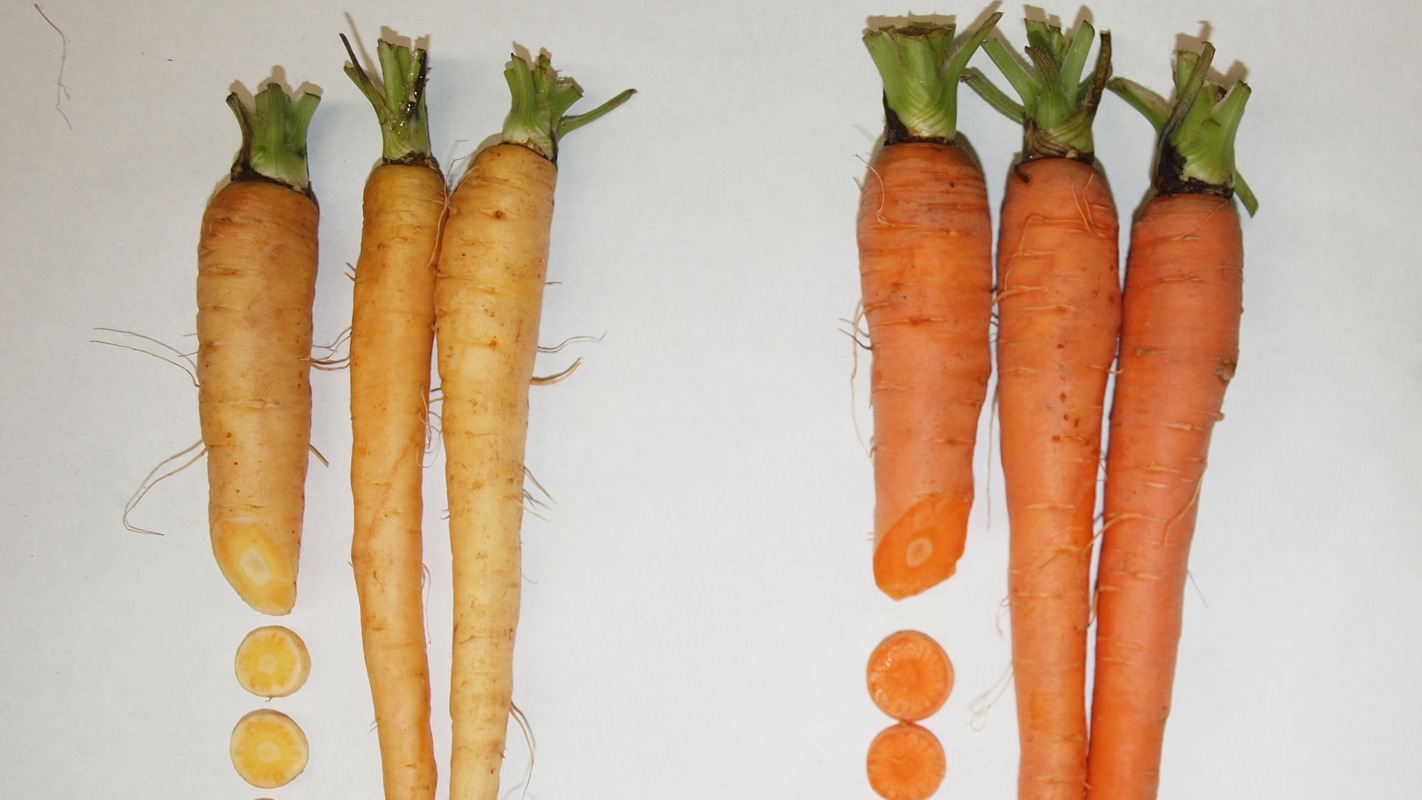Bugs Bunny’s Knowledge Confirmed

Bugs Bunny hasn’t aged a day since his cartoon debut in 1940, and he rarely wears glasses. He can play all nine positions on a baseball field – at once. He also consistently outwits gangsters, hunters and water fowl.
That could be due to all the carrots he consumes. Carrots contain high quantities of carotenoids – plant pigments that have been shown to provide health benefits, including reduced risk of diseases such as eye disease. The orange carrot is the richest source of vitamin A in the American diet.
Maybe the wily and youthful-looking rabbit has intuited for decades what can now be found in the scientific literature, as NC State researchers worked with colleagues from around the globe to sequence the carrot genome in order to learn more about the plant’s evolution and how it accumulates its high levels of carotenoids.
Massimo Iorizzo, a researcher with NC State’s Plants for Human Health Institute in Kannapolis and first author of a paper describing the carrot genome sequence, published in Nature Genetics, says the findings could support crop improvement efforts for sustained agricultural production and improved human health benefits.
So what’s up with the carrot genome, doc?
The researchers examined 35 different types of carrot. First, by comparing white and light-orange carrots, which have lower levels of carotenoids, with carotenoid-rich bright orange carrots, the researchers found a specific gene that appears to control the accumulation of carotenoids in the vegetable.
In the paper, Iorizzo proposed a genetic mechanism that explains why carrot roots accumulate carotenoid pigments. “Orange carrots have co-opted light-induced genes to accumulate higher levels of carotenoids in their roots,” Iorizzo said. “Though grown in the dark, orange carrots act like they’re grown in the light.”
Evolutionarily, carrots split from grapes more than 100 million years ago, which is fortunate because Bugs enjoys carrot juice much more than wine. Carrots diverged from lettuce more than 70 million years ago.
The center of origin for carrot domestication was the Middle East and Central Asia; documentation shows that purple and yellow carrots were grown in Central Asia 1,100 years ago, with orange carrots first documented in the 16th century.
The paper also describes gene expansion contributing to flavor and carotenoid accumulation in modern carrots.
These colorful, high-carotenoid carrots have become popular, perhaps because of their health benefits: through breeding, carotene content has increased in the carrot by 50 percent in the United States since 1970. And that’s a good thing as vitamin A deficiency is a global problem, although less so in the United States.
Iorizzo says that the sequenced genome will significantly change the nature of research in carrot biology.
“It will serve as the basis in molecular breeding to assist in improving carrot traits such as enhanced levels of carotenoids, drought tolerance and disease resistance,” he said. “The primary focus of research of several laboratories around the world that conduct fundamental research on carrot genetics will shift more toward extensive genetic screens for genomewide association analysis and functional genomics.”
Hamid Ashrafti, an NC State assistant professor of horticultural science, is a co-author on the paper. Philipp Simon from the University of Wisconsin-Madison is the paper’s corresponding author.
- Categories:


